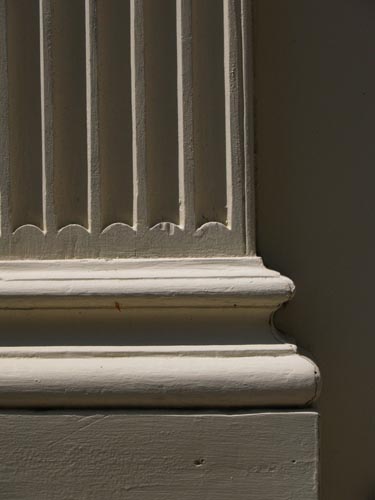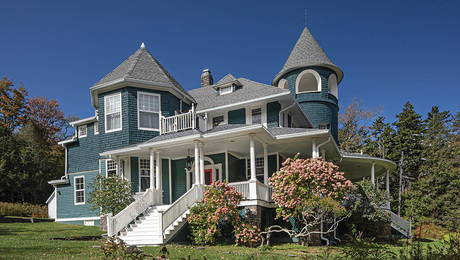
A detailed look at a wood, fluted, Roman Doric pilaster in Salem, Mass. reveals the artistry of a classical mainstay.
The shadows created in the concave, vertical flutes are an appealing contrast to the horizontal shadows below them created by the deeply profiled trim known as the “Attic base”. Evidence of the craftsman’s hand is clearly visible in the worked wood. The careful miter joint, where the trim wraps above the base plinth, reminds us that this pilaster is made of assembled parts. Their proportions are thoughtfully considered. The flutes are all wider then the space in between them, known as fillets, and together divide the surface that comprises the shaft into a three-dimensional, patterned form which otherwise, if left plain, would appear flat and dull. The “Attic base” trim gracefully enables the transition from the narrower upper shaft to the wider plinth that visually supports the pilaster.
Every element of this detail contributes to the overall elegant effect. You needn’t be a classicist to appreciate it.
by Katie Hutchison for House Enthusiast and SquareOne
Read more design snapshots by architect Katie Hutchison
Fine Homebuilding Recommended Products
Fine Homebuilding receives a commission for items purchased through links on this site, including Amazon Associates and other affiliate advertising programs.

Code Check 10th Edition: An Illustrated Guide to Building a Safe House

Pretty Good House

All New Bathroom Ideas that Work






























